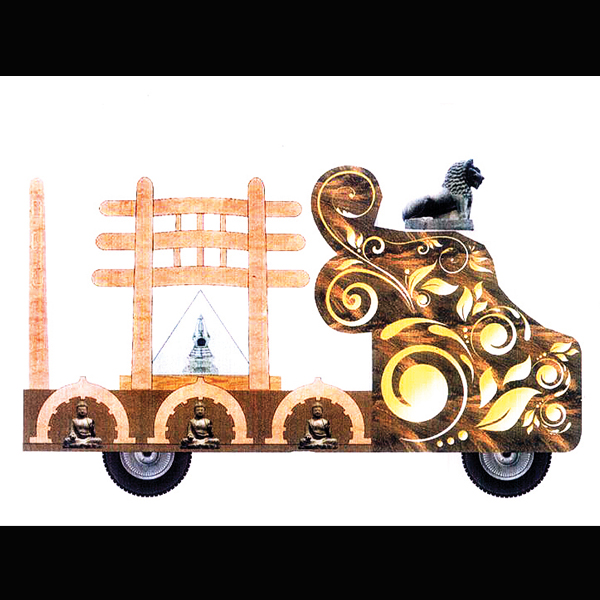The mortal remains will be brought to Nagpur, ahead of
the international Buddhist conference, and then taken in a rath to
various districts in state and also to neighbouring Raipur
-

- A graphical representation of the rath in which Gautam Buddha’s mortal remains will be taken across the state
The urn containing the mortal remains will be brought to Nagpur airport on October 14. Then, it will be taken on a rath across the state, covering Nagpur, Bhandara, Sakoli, Gondia, Chandrapur, Rajnandgaon, Durg, Bhilai and Raipur. It will return to Dragan Palace in Kamptee and then Nagpur, and will be sent back to Sri Lanka on October 24.
Minister for social justice and special assistance Raj Kumar Badole is instrumental in making this trip happen. "I visited Sri Lanka last month and met the organisers of the Lankan Mahabodhi Society. They agreed to facilitate this trip. This is the first time the ashes of Buddha and his disciples will be on display."
Buddhist groups in India are coordinating the programme. The ashes will be on display at the first International Buddhists Conference 2015 in Nagpur on October 20-21, a day before Dussehra. Nagpur is where Dr BR Ambedkar accepted Buddhism on October 14, 1956, along with several followers.
"India is where Buddha spent his life, attained enlightenment and mahaparinirvan. This is the land where Buddhism took birth. The government is supporting the event with an aim to project our heritage," said Badole, who is also a follower of Buddha.
The urn will have tight security, said Badole. Insurance cover has also been given, though the amount could not be obtained immediately.
The ashes coming to India belong to Neelagiri Seya, the largest Buddhist Stupa in the eastern province of Sri Lanka. The stupa, located in the Lahugala Forest Reserve, has been neglected for over three decades, owing to LTTE activities in the area. It is supposed to be built in third century BC. It was excavated by the country's archaeological department a couple of years back.
On the historical significance of these ashes, Yojna Bhagat, a professor of Pali and Buddhist studies at Mumbai university, said, "These are not ashes but relics of Buddha. When Buddha died in 6th century BC, his ashes were distributed in eight parts for eight royal kingdoms and preserved at eight different stupas in North India. In 3rd century BC, King Ashoka dug out one stupa and redistributed the relics to 84,000 places across the world, which helped spread Buddhism. His son Mahendra took a tooth relic of Buddha to Sri Lanka, which is still kept in a big temple. Relics which were found much later in the archaeological excavation in Lanka are often taken abroad for followers."
"The relics in India are bound to stupas. A few excavated by the Archeological Survey of India are kept in museums and at the Golden Pagoda in Gorai and are not allowed to travel," added Bh
No comments:
Post a Comment